
Most office workers spend a large proportion of the working day sitting at their desk. In order to work as effectively as possible, therefore, it’s essential that the desk and everything around it are organised in a way that will stimulate good working practices and ensure the comfort and well-being of every worker.
There is a lot of emphasis these days on producing ergonomic office furniture that will alleviate stress and create a perfect working environment. However, these furniture items are only effective if they’re set up correctly, both individually and together. Read More to know How experts from Hurdleys Office Furniture set an optimised office.
1. Desk

The standard office desk has been traditionally 29 inches high although it’s now realised that this isn’t satisfactory for most people. As a result, many adjustable height electric desks are available and can be set to a level that’s perfect for working in a sitting or standing position.
The ideal position when sitting is that your feet should fit flat on the floor with reasonable clearance between your legs and the desk. When typing on a keyboard, your arms and hands should be parallel to the floor.
If you can’t achieve these positions by adjusting the desk or chair height, your posture may suffer through being hunched or stretched over the desk. In these cases, use a footrest or keyboard tray to modify your position and so avoid discomfort and injury.
Organise the desk so everything that is used regularly is close at hand. Less frequently used items can be stored nearby while those used rarely can be placed in cupboards and filing cabinets. The aim is to have a clutter-free work area to prevent distractions but to know where everything is and be able to access it when needed.
2. Chair

Having a good quality office chair that’s correctly set up is extremely important since it will be used for long periods. Choose one that has the following features and adjust them properly:
- height adjustable so that feet can be placed flat on the floor, or a footrest, with comfort
- lumbar support that fits the natural curve of the lower back and provides support for the spine
- depth of seat that enables a 6-8 centimetre gap between the edge of the seat and your legs while sitting comfortably with the lower back against the lumbar support
- A back that will recline as well as allow sitting upright
- depending on personal choice, a mesh material for coolness or a comfortable and durable material
- armrests that keep the arms parallel to the floor and prevent the shoulders from being hunched.
- Office chairs that are highly adjustable ensure greater comfort, better posture and reduced stress. Although they may cost more, they’re a great investment because they produce better staff well-being and increased productivity.
3. General Environment

Workers are known to be more productive in comfortable temperatures so it pays to put the heating on in winter and ensure air conditioning isn’t too fierce in summer. The presence of indoor plants or a view of outdoor greenery is also thought to prevent fatigue and boost productivity.
Whenever possible, have plenty of natural light and position desks so they gain the maximum amount. Good quality lighting, especially the natural variety, will improve morale, reduce eye strain, lower stress levels and avoid fatigue. It also helps workers sleep better at night so they’re more refreshed for their day’s work.
Excessive noise can be distracting, whether from conversations, the clicking of keyboards or other normal office sounds. To avoid this, arrange the furniture into cubicles with noise-deadening screens to aid worker concentration.
All workspaces should be designed and organised for the use of individuals so they can be as productive as possible. And the overall work environment needs to be arranged in such a way that each can work individually or collaboratively to achieve the best for the business.

 Best Sellers
Best Sellers
 Office Chairs under $299
Office Chairs under $299
 Ergonomic Chairs
Ergonomic Chairs
 Executive Chairs
Executive Chairs
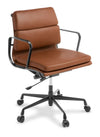 Eames Replica Chairs
Eames Replica Chairs
 Specialist Chairs & Stools
Specialist Chairs & Stools
 Meeting Room & Visitor Chairs
Meeting Room & Visitor Chairs
 Bar Stools
Bar Stools
 Cafe & Lunch Room Seating
Cafe & Lunch Room Seating
 Reception Seating
Reception Seating
 Soft Seating
Soft Seating
 Booth Seating
Booth Seating
 Ottomans/Modular Seating
Ottomans/Modular Seating
 Training & Conference Chairs
Training & Conference Chairs
 Best Sellers
Best Sellers
 Standing Desks
Standing Desks
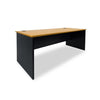 Office Desks
Office Desks
 Straight Desks
Straight Desks
 Shared Desks
Shared Desks
 Corner Desks
Corner Desks
 Reception Desks
Reception Desks
 Credenzas
Credenzas
 Mobile Drawers
Mobile Drawers
 Tambours
Tambours
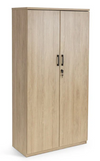 Cupboards & Bookshelves
Cupboards & Bookshelves
 Filing Cabinets & Lockers
Filing Cabinets & Lockers
 Boardroom & Meeting Room Tables
Boardroom & Meeting Room Tables
 Bar Leaners
Bar Leaners
 Café & Lunch Room Tables
Café & Lunch Room Tables
 Flip Tables
Flip Tables
 Coffee Tables
Coffee Tables
 Desk Partitions
Desk Partitions
 Partitions
Partitions
 Monitor Arms
Monitor Arms
 Mats & Footrests
Mats & Footrests
 Technology
Technology
 White Boards
White Boards
 Glassboards
Glassboards
 Flip Charts & Easels
Flip Charts & Easels
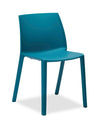 Outdoor Seating
Outdoor Seating
 Outdoor Tables
Outdoor Tables
 Outdoor Leaners
Outdoor Leaners
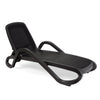 Sun Loungers
Sun Loungers
 Acoustic Desk Accessories
Acoustic Desk Accessories
 Ceiling & Wall Acoustics
Ceiling & Wall Acoustics
 Freestanding Acoustics
Freestanding Acoustics
 Acoustic Pods
Acoustic Pods
